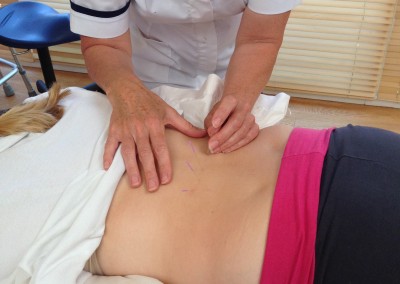Acupunture
What Is Acupuncture?

Acupuncture is one of the many skills employed within physiotherapy as part of an integrated approach to the management of pain and inflammation. Physiotherapists base their treatments on scientific research and clinical evidence that Acupuncture can reduce pain by stimulating the brain and spinal cord to produce natural pain-relieving chemicals such as endorphins, melatonin (which promotes sleep) and serotonin (to promote well-being), to name but a few. These chemicals assist the body’s healing processes and offer pain relief as a precursor to other treatments such as manual therapy or exercise in order to aid recovery. Conventional acupuncture involves the use of single-use, pre-sterilised disposable needles of varying widths, lengths and materials that pierce the skin at the acupuncture points. The physiotherapist will determine the locations of these points on the basis of an assessment of the cause of the imbalance. A number of needles may be used during each treatment, and these are typically left in position for between 20 and 30 minutes before being removed. Trigger point acupuncture may also be used to facilitate relaxation in specific muscles following traumas, for longer-term unresolved muscle pain, or as a means of increasing muscle length in order to aid stretch and rehabilitation. In the latter case, the needle is inserted into the affected muscle until the tissue is felt to relax under the needle, which is then removed. Trigger point needling often produces an effect much more quickly, and therefore, does not require the 20– 30-minute treatment time (www.alied.co.uk and www.aacp.org.uk). Acupuncture is an ancient form of Chinese Medicine in which fine needles are inserted into the skin at certain points on the body. Acupuncture can be a very useful adjunct to physiotherapy as a tool to reduce pain. It can be used in combination with physiotherapy or on its own.
Common conditions we treat with acupuncture
- Acute and chronic low back pain and neck pain
- Nerve pain such as sciatica
- Acute painful joints such as frozen shoulder
- Arthritis
- Tendon related problems such as tennis elbow
- Headaches and migraines



